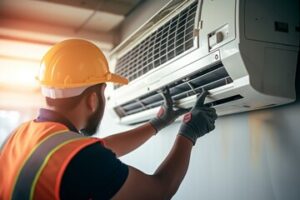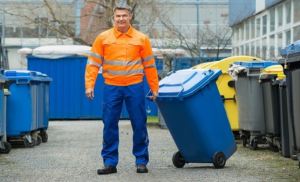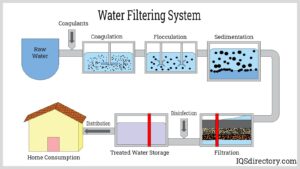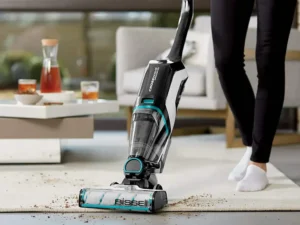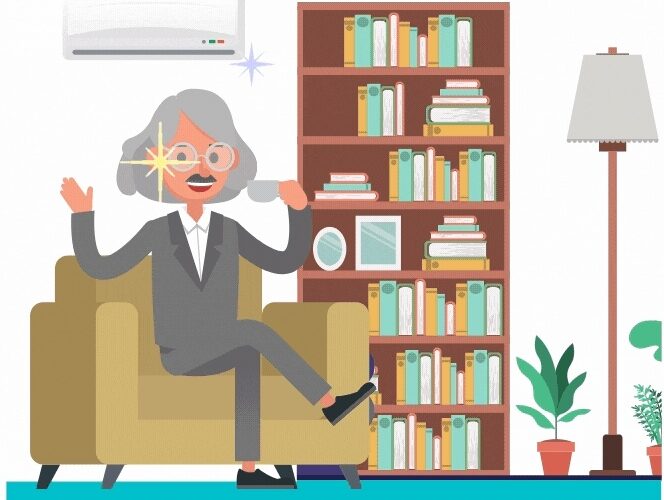Hardwood floors add beauty and value to your home. They are durable and require little maintenance. If your hardwood floors look dull, refinishing them can bring back their luster.
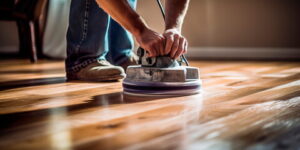
Before starting your Hardwood Floor Refinishing NJ project, make sure that the flooring is sealed. You can test this by pouring water on the floor. If the water evaporates quickly, the wood is well-sealed.
The cost of hardwood floor refinishing will vary according to the type of wood used in the floors. Pine is more challenging to work with than other types of hardwood, but refinishing pine can be done for about $4 to $7 per square foot. This cost includes labor, cleaning up the floor, and any other services that may be needed. Refinishing is a much more affordable option than replacing the flooring with new materials.
The first step in refinishing is to sand down the old finish, exposing the bare wood underneath. This step is necessary to ensure the new stain will adhere properly. Typically, 80-grit sandpaper will be used for this process. It is a good idea to hire a professional for this task, as it can be very messy. Homeowners should remove all furniture from the room before beginning this process.
After the stain is applied, a protective topcoat must be added to protect the hardwood. This is an important step, as hardwood is susceptible to water damage and dings without it. There are several types of topcoats available, including oil-based, water-based, and wax finishes. Each has a different price range, so it is important to get a quote from a professional before deciding which one to use.
Refinishing your hardwood floors is a big project that requires a lot of work. However, it can also be very rewarding and will add value to your home. It is possible to recoup up to 147% of the costs in resale value, so it’s an excellent investment for any homeowner.
Choosing the right contractor for your refinishing project is critical to the success of the job. It is important to ask for quotes and read reviews, as well as check references. Hiring a cheap contractor could lead to less-than-satisfactory results, and can end up costing you more in the long run.
Hardwood floor refinishing is a great way to update your home and improve its appeal. It is a more affordable option than installing new floors and can be completed in a shorter amount of time. Regular dusting and vacuuming will keep the floors clean, extending their lifespan and protecting them from damage. Regular mopping with a microfiber mop will also help to eliminate built-up dirt and grime.
Appearance
Hardwood floors look beautiful in most homes, but they can start to lose their luster over time. Dust and dirt collect on the surface, causing scratches and stains that can be difficult to remove. The problem is even worse in high-traffic areas. Many homeowners try to hide this damage by covering their hardwood with carpet, but it’s better to refinish the floors instead.
Refinishing is a lengthy process that can take several days, but it will leave your hardwood floors looking like new. First, the floor must be sanded to remove any existing finish and to smooth out rough spots. Then, the wood can be stained in any color you choose. The stain is applied over a polyurethane sealant, which is buffed and vacuumed between coats for stronger adhesion.
Before the sanding process begins, it’s important to clear the floor of furniture and decorations. This step is essential to achieving a flawless finish, and it will prevent any debris from getting into the joints of the boards or scratching the new coating. It’s also a good idea to open windows and doors to keep the dust contained in the room. Lastly, it’s recommended to use 180-grit sandpaper and a hand-sanding block to get into corners and other nooks that the buffer might miss.
Once the sanding and staining processes are complete, your hardwood floors should be ready for recoating. This is a quicker and cheaper option than refinishing, and it will help to protect your flooring from future wear and tear. You can choose from a variety of sheen options, from high-gloss to satin and matte. High-gloss provides a shiny, reflective appearance, while satin and matte have less shine and offer a more natural, subdued look.
The best way to maintain your hardwood floors is by routinely cleaning them using a dust mop or sweeper, and applying felt pads to furniture legs. This will help to protect the floors from scratches and dents, and it will make them easier to clean. You should also vacuum or sweep the floors regularly, and wipe them down with a damp cloth when necessary. Regular cleaning will also extend the lifespan of your hardwood floors, and it will prevent more serious problems down the road.
Durability
Over time, even the highest quality hardwood floors can lose their shine and begin to show signs of wear. Refinishing can give them a new lease on life and restore their original beauty. It is also a great way to update the look of your home and change the color of the hardwood floors to match your decor preferences.
The refinishing process begins by thoroughly cleaning the wood floorboards to remove dirt, dust and debris. This can be done using a mop, vacuum cleaner or broom. It is important to ensure that the boards are completely clean before sanding, as any dirt or dust left behind will be visible in the finished product. After the sanding is complete, the wood must be thoroughly cleaned again to remove any dust and residue.
After the sanding is completed, it is important to use a high-quality polyurethane finish. This will protect the boards from damage, and it will also help to hide any scratches or dents on the surface of the wood. It is a good idea to apply several coats of the polyurethane finish, allowing each coat to dry completely in between.
One option for maintaining the durability of hardwood floors is to stain them. Staining is a simple process that can be done at home with the right tools and instruction. The stain will not only add a pop of color to the room, but it will also help to protect and preserve the hardwood floors.
Another option for preserving the durability of hardwood floors is to recoat them. Recoating is a much simpler process than refinishing, and it can be done at a fraction of the cost. Recoats are best suited for floors that have minor stains and scratches on the surface, but they should not be used to address deep scratches or dents.
While refinishing is the most durable option for wood flooring, it can be a time-consuming and expensive process. To avoid the expense and hassle of refinishing your hardwood floors, it is important to maintain them properly. Regular cleaning will help to prevent scratches and dents, and you should use protective pads under furniture and doormats to keep dirt and grit from scratching the surfaces of your hardwood floors.
Maintenance
Refinishing hardwood floors is a great way to refresh the appearance of your home and add value. It is also a more affordable option than replacing your flooring with a new set. In addition, refinishing offers a longer lifespan than recoating because it removes all of the old finish and applies a new layer. However, it is important to consider the condition of your existing floor before making a decision.
The process of refinishing a wood floor takes a few days and requires you to remove all furniture. The floors are then sanded and stained, and the new finish is applied. The new finish can be water-based or oil-based, depending on your preference. Once the new finish is applied, you can reinstall your furniture.
One of the benefits of refinishing your wood floors is that you can choose from a variety of stain colors and finishes to match your decor. This allows you to personalize your home and create a cohesive look. This process is also easy and cost-effective. It is a good choice for people who want to keep their floors in good condition but don’t have the budget for a complete replacement.
Hardwood floor refinishing is a long-term investment that will last for many years. However, it’s important to follow proper maintenance to protect the finish and ensure that the wood stays in good condition. Regular sweeping, vacuuming, and mopping will prevent dust and dirt from scratching the surface. It is also a good idea to use rugs in heavily trafficked areas.
If your floors are damaged or worn down, you should consider having them refinished. Refinishing is a more comprehensive process than resurfacing and will restore your floors to their former glory. It is important to hire a qualified flooring professional who can handle this delicate task. They will have the experience and knowledge to provide you with beautiful, lasting results.
Refinishing your hardwood floors is a costly project, but it will save you money in the long run. It will prevent the need for expensive floor replacements and extend their life. It is a worthwhile investment, especially if you have a high amount of foot traffic or indoor pets.

